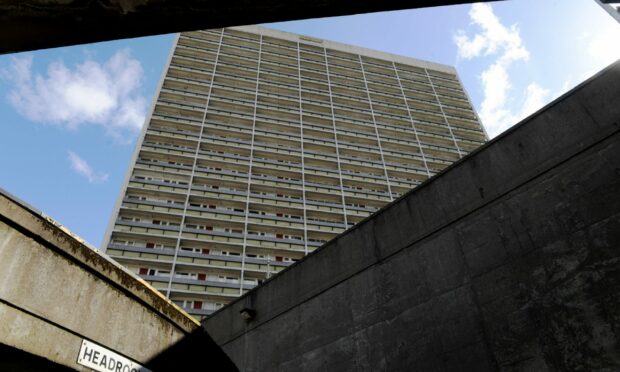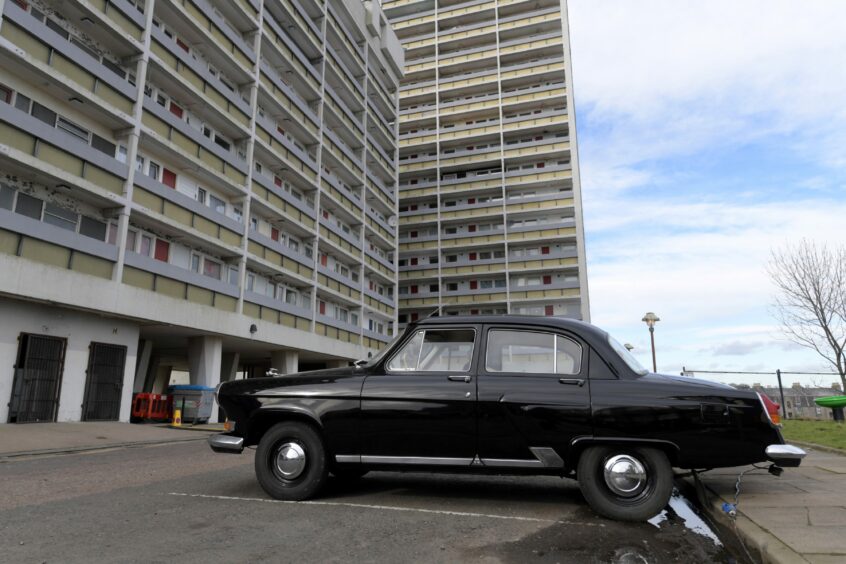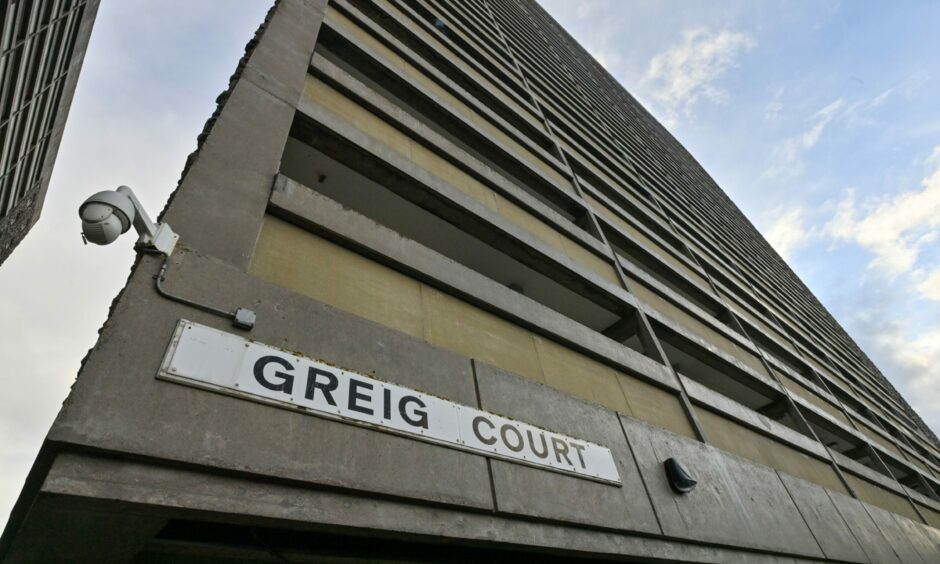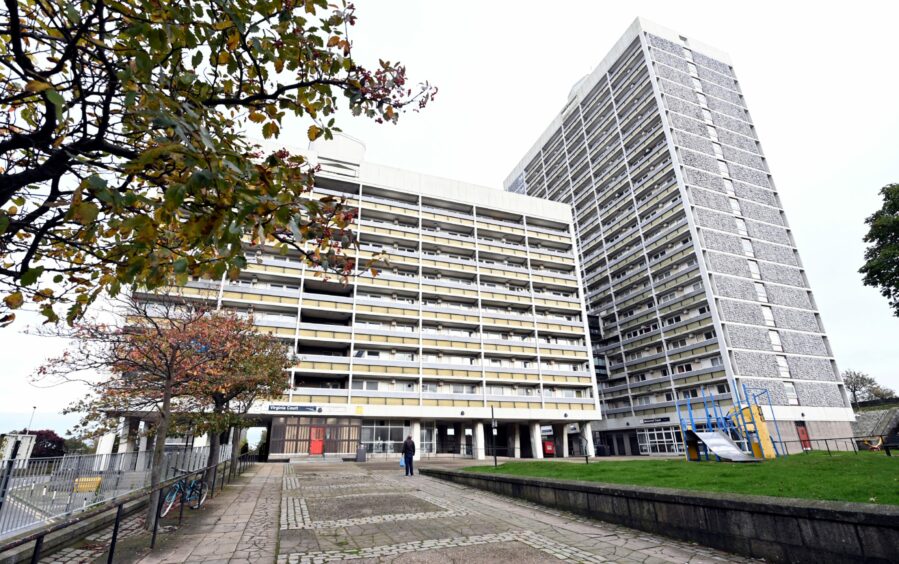Knocking down Aberdeen’s ageing city centre multi-storey flats and finding residents new homes could prove cheaper than doing them up to modern standards.
Replacing the eight high rises could cost up to £378 million over the next 30 years, according to city chiefs.
But improving the existing blocks at Gilcomstoun Land, Marischal Court, Virginia Court, Seamount Court, Porthill Court, Thistle Court, Greig Court and Hutcheon Court could cost even more.
Modernising the blocks could top £400 million – or around £480,000 per flat – over the next three decades.
The immediate future of the blocks is expected to be decided next summer.
Before then, council bosses want to undertake “extensive” consultation with tenants, owners and others with an interest in the listed buildings.
Have you lived in one of the Aberdeen city centre multi-storeys? What do you think should be done with them long term?
Let us know in the comment section below.
What could happen to the Aberdeen city centre multi-storeys?
Complete demolition is one of five options priced up by Aberdeen City Council, which still owns the vast majority of the properties.
If that went ahead, residents would gradually be moved out and the city would look to buy privately-owned properties in the block.
The local authority will weigh up the cost of replacing the number of homes in its high rises, against continued investment in staving off age-related deterioration.
Even if the high rises are left as they are today, the local authority bosses believe each flat would cost them £270,000 to maintain over 30 years.
That option would involve only necessary investment to keep the blocks going and to address a backlog of repairs.
How many people live in each of the Aberdeen city centre multi-storey blocks?
The Press and Journal has calculated costs based on the 839 flats in the city centre blocks, though Aberdeen City Council owns only 633 of those.
But the details of the business case explaining the costs in greater detail, along with in-depth surveys of the towers, have not been shared publicly.
They will be discussed behind closed doors by the city finance committee on Wednesday.
There is a full breakdown of the options being considered further down this page.
‘Deteriorating’ reinforced concrete towers expected to cost public millions by 2055
Engineering consultants Faithful and Gould have advised Marischal College top brass that “significant investment” is needed to even return the blocks to a satisfactory standard.
Roofs have been found in bad condition, while the mechanical, plumbing and electrical systems need investment too.
The consultants also noted the reinforced concrete the blocks are built from is “deteriorating”. The external fabric is “in generally poor condition”.
It’s worst on the five oldest blocks, now around 60 years old.
Reinforced concrete should last between 50 and 100 years. But city pollution and the harsh winds coming off the North Sea can reasonably be expected to shorten that lifespan.
Despite this, those five oldest towers – Gilcomstoun Land, Marischal Court, Virginia Court, Seamount Court and Porthill Court – were A-listed by Historic Environment Scotland (HES).
Despite incoming increased environmental standards for council homes, the heritage quango ruled the “brutalist”, post-war design of the towers was worth recognition.
Environmental rules only getting tougher while Aberdeen multi-storeys already fail to meet standards
By 2025, some flats on the exposed sides of the high rises won’t meet Scottish energy efficiency standards.
Though there will be exemptions, those council-owned homes rated D or worse for energy efficiency should not be relet, strictly speaking.
Chief corporate landlord officer Stephen Booth has briefed councillors that lesser standards set in 2015 had already proved “impractical to fully meet”.
The blocks are already exempt because of legal disputes, or work not being technically possible or being “disproportionately” pricey.
It is feared the listed status will only increase that cost.
But before the eight tower blocks – later reduced to five on appeal – in Aberdeen were listed, HES deputy head of designations Dawn McDowell told The P&J the buildings would not be “frozen in time”.
“Maybe in 10 years we can decide if the buildings would still need to be listed,” she added.
Councillors will be asked to note the eye-watering cost estimates, and allow council chiefs to begin consulting on the future of the high rises.
A final decision is not expected to be made before next summer.
What is being considered for the Aberdeen city centre multi-storeys?
Option 1: Maintain the current status quo
Cost over 30 years: £270,000 to £350,000 per flat or £227m – £294m overall
- Backlog repairs.
- Work as needed as the building ages.
Option 2: Medium investment
Cost over 30 years: £300,000 to £380,000 per flat or £252m – £319m overall
- Backlog repairs.
- Work as needed as the building ages.
- Provision of communal district heating.
- Work targeting a minimum of energy efficiency rating EPC D for each flat. This might include thermal upgrading of undercrofts and roofs.
- Improved standards for let homes, upgrading as needed.
Option 3: High investment
Cost over 30 years: £330,000 – £430,000 per flat or £277m – £361m overall
- Backlog repairs.
- Work as needed as the building ages.
- Provision of communal district heating.
- Work targeting a minimum of energy efficiency rating EPC C for each flat. This might include thermal upgrading of undercrofts and roofs, upgrades to the reinforced concrete infill panels on balconies, and improved wall insulation.
- Fire safety upgrades.
- Improved standards for let homes, upgrading as needed.
Option 4: Very high investment
Cost over 30 years: £380,000 – £480,000 per flat or £319m – £403m overall
- Backlog repairs.
- Work as needed as the building ages.
- Provision of communal district heating.
- Work targeting a minimum of energy efficiency rating EPC B for each flat. This might include thermal upgrading by cladding the exterior.
- Fire safety upgrades.
- Improved standards for let homes, upgrading as needed.
- Moving residents out of the blocks during work.
Option 5: Demolition and replacement
Cost over 30 years: £420,000 – £450,000 per flat or £352m – £378m overall
- Only carrying out urgent repairs and investing only when as required.
- Progressively moving residents out and buying privately-owned properties.
- Demolition
- Replacing the homes with new builds, rated EPC A for energy efficiency… the council’s oft-mentioned gold standard




Conversation